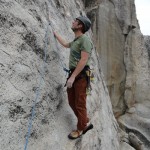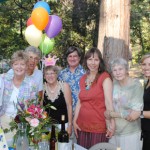The final sessions to discuss the proposed Palms to Pines Scenic Byway are planned for October. The fourth series of planning meetings occurred from May 31 through June 2.
At those meetings, a draft vision statement was presented to the participants and several other specific issues were discussed.
The proposed vision statement read, “The Palms to Pines Scenic Byway connects people to a precious island oasis and respite from urban life. Visitors and residents actively work to preserve this special place.”
The Forest Service notes from the meetings indicated that most attendees found the statement’s intent acceptable, but felt the specific language should be modified.
For example, some thought it was too focused on “coming up the Hill” and the use of the word “island” evokes an oceanic image rather than of an alpine environment.
The federal officials were also cognizant that the management plan must carefully tread between promoting the scenic values while avoiding becoming a marketing campaign.
“Although Idyllwild has been a destination for generations and the [Santa Rosa and San Jacinto Mountains National] Monument has been a destination for a decade, the communities between have not been destinations and have no desire to become destinations for scenic drivers.”
The discussion of preserving the existing routes from the Hill to the desert recognized that these highways are not commuting pathways and some judicious realignment would improve their daily use.
In addition, the conversation addressed how to focus visitors on the destination points of Idyllwild and the Monument while bypassing the Pinyon and Garner Valley communities.
The authors noted, “The general feeling from Garner Valley participants is that if national scenic byway designation encourages more traffic that it’s undesirable.They feel anything that keeps the area off the radar is a good thing.”
After the October sessions, a plan and proposal will be developed.
Six draft goals of for the Palms to Pines Scenic Byway
These were agreed to during the April sessions:
- Preserving the historic character and uses of the corridor.
- Enhancing the visitor and resident experience by providing desired opportunities, information and services.
- Developing infrastructure and information to reduce congestion and direct visitors to areas that can best serve their needs.
- Increasing the visibility of selected intrinsic features along the route.
- Sharing the story of the place to engender a sense of caring and stewardship.
- Helping visitors and residents to travel the roadway safely.










